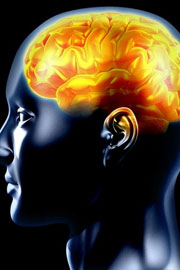Neurological Degenerative Conditions
Neurological degenerative conditions are also known as neurodegenerative disorders. There are over 600 different types of disorders that affect the nervous system, where neurodegenerative disorders are characterized as hereditary. Usually, they are identified by the progressive dysfunction of the nervous system. These kinds of disorders involve the partial or complete deterioration of a certain part of the brain, or other parts of the nervous system. Some of the most common types of neurological degenerative conditions include:
- Huntington’s disease
- Alzheimer’s disease
- Multiple sclerosis
- Parkinson’s disease
- ALS or Amyotrophic Lateral Sclerosis
Diagnosis of Neurological Degenerative Conditions
Neurological degenerative conditions are progressive and incurable. Since the neurons of the human brain are affected, these disorders lead to the death or degeneration of the nerve cells, especially on the brain. When the neurons in the brain are damaged, the body is not capable of replacing these neurons. As a result, ataxia – which is a problem that limits body movements or dementias that affect brain activity – is encountered. In a recent study, it has been found that about 60 to 70 percent of neurological degenerative conditions are categorized as Alzheimer’s disease. These conditions may be diagnosed at any age, but is more common to appear in people of old age. Aside from behavioral observation, a brain biopsy is performed to confirm the diagnosis of Alzheimer’s disease.
Kinds of Neurological Degenerative Conditions
According to recent medical research, the symptoms of Alzheimer’s disease begin years, or even decades, before clinical symptoms can be observed. The gap between the start and the pathological changes is the perfect time for diagnosis and possible treatment. For Alzheimer’s disease, there are two changes on the tissue of the brain that are normally associated with the diagnosis of this neurological degenerative condition:
- First is the abundance of senile plaques, which are abundant protein fragments that are naturally produced inside the brain. The abundance of protein fragments are also known as amyloid A-beta 1-42. However, there is no exact explanation as to why there is an excessive amount of A-Beta 1-42; even still, it’s already considered as one of the most common symptoms of Alzheimer’s disease.
- Neurofibrillary tangles or threads are also seen as an abnormal deposit of substances inside the brain cells. Another way to confirm the diagnosis of Alzheimer’s is to perform imaging tests, where the structural changes in different parts of the brain can be seen. These areas are where the neurofibrillary tangles deposit.
Another kind of neurological degenerative condition is Multiple Sclerosis (MS), which is a disorder affecting the brain and the spinal cord. Among the symptoms of this disease are muscle weakness, lack of muscle coordination, and visual impairments. Although there are no specific tests that will confirm the diagnosis of MS, clinical and paraclinical evidence and history are among the criteria being used to diagnose this kind of condition.
Treatment and Cost
Based on a recent statistics, caring for someone with mild symptoms of Alzheimer’s disease or Multiple Sclerosis,may cost up to $18,400 a year. For those with moderate symptoms, the financial cost can reach up to $30,100 a yearandfor those with severe symptoms the cost can reach $36,100 a year.

